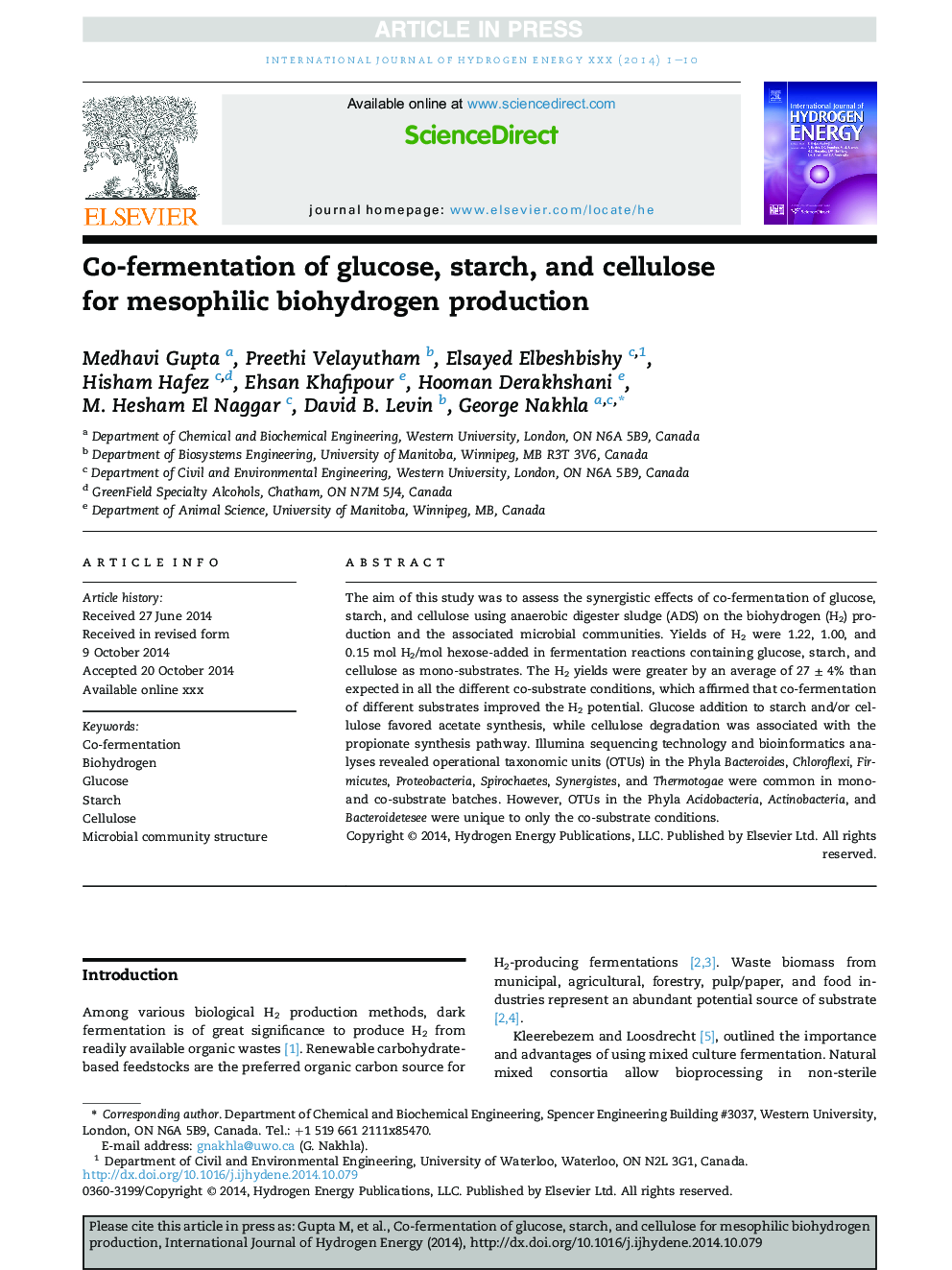| Article ID | Journal | Published Year | Pages | File Type |
|---|---|---|---|---|
| 7716665 | International Journal of Hydrogen Energy | 2014 | 10 Pages |
Abstract
The aim of this study was to assess the synergistic effects of co-fermentation of glucose, starch, and cellulose using anaerobic digester sludge (ADS) on the biohydrogen (H2) production and the associated microbial communities. Yields of H2 were 1.22, 1.00, and 0.15 mol H2/mol hexose-added in fermentation reactions containing glucose, starch, and cellulose as mono-substrates. The H2 yields were greater by an average of 27 ± 4% than expected in all the different co-substrate conditions, which affirmed that co-fermentation of different substrates improved the H2 potential. Glucose addition to starch and/or cellulose favored acetate synthesis, while cellulose degradation was associated with the propionate synthesis pathway. Illumina sequencing technology and bioinformatics analyses revealed operational taxonomic units (OTUs) in the Phyla Bacteroides, Chloroflexi, Firmicutes, Proteobacteria, Spirochaetes, Synergistes, and Thermotogae were common in mono- and co-substrate batches. However, OTUs in the Phyla Acidobacteria, Actinobacteria, and Bacteroidetesee were unique to only the co-substrate conditions.
Related Topics
Physical Sciences and Engineering
Chemistry
Electrochemistry
Authors
Medhavi Gupta, Preethi Velayutham, Elsayed Elbeshbishy, Hisham Hafez, Ehsan Khafipour, Hooman Derakhshani, M. Hesham El Naggar, David B. Levin, George Nakhla,
